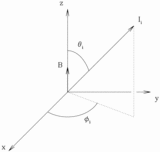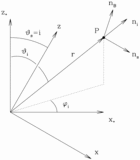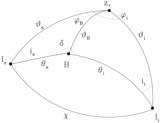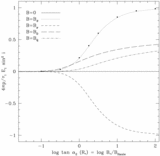Image Details
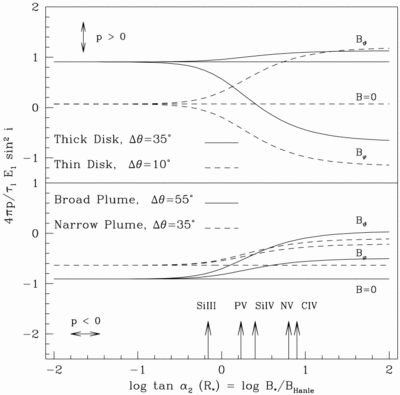
Caption: Fig. 5.
Integrated line polarizations. The top panel is for polar plumes and the lower for equatorial disks. The vertical axis is the normalized integrated line polarization; the horizontal axis is tan α2(R*) = B*/BHanle ~ B*/Aul (see eq. [4]). Two different half‐opening angles, Δ![]() , are considered for both plumes and disks, as indicated by the line types. There are three curves for each geometry, representing different magnetic field configurations (B* = 0, B
, are considered for both plumes and disks, as indicated by the line types. There are three curves for each geometry, representing different magnetic field configurations (B* = 0, B![]() , and B
, and B![]() ), as indicated. At the bottom is shown an ensemble of line distributions. For a surface magnetic field of 100 G, each arrow indicates where a line measurement for a given atomic species would be placed along the abscissa. Changing the surface field strength does not change the relative positions of the arrows but shifts the line ensemble as a whole to the left or right. For a real star, the measured polarizations for the line ensemble are allowed to slide horizontally until a best fit is obtained to one of the diagnostic curves, at which point both the field geometry and the surface field strength are determined. Note that for the curves shown here, the magnetic field is assumed to decrease as B ~ r−1 in each case.
), as indicated. At the bottom is shown an ensemble of line distributions. For a surface magnetic field of 100 G, each arrow indicates where a line measurement for a given atomic species would be placed along the abscissa. Changing the surface field strength does not change the relative positions of the arrows but shifts the line ensemble as a whole to the left or right. For a real star, the measured polarizations for the line ensemble are allowed to slide horizontally until a best fit is obtained to one of the diagnostic curves, at which point both the field geometry and the surface field strength are determined. Note that for the curves shown here, the magnetic field is assumed to decrease as B ~ r−1 in each case.
Copyright and Terms & Conditions
© 1997. The American Astronomical Society. All rights reserved. Printed in U.S.A.



